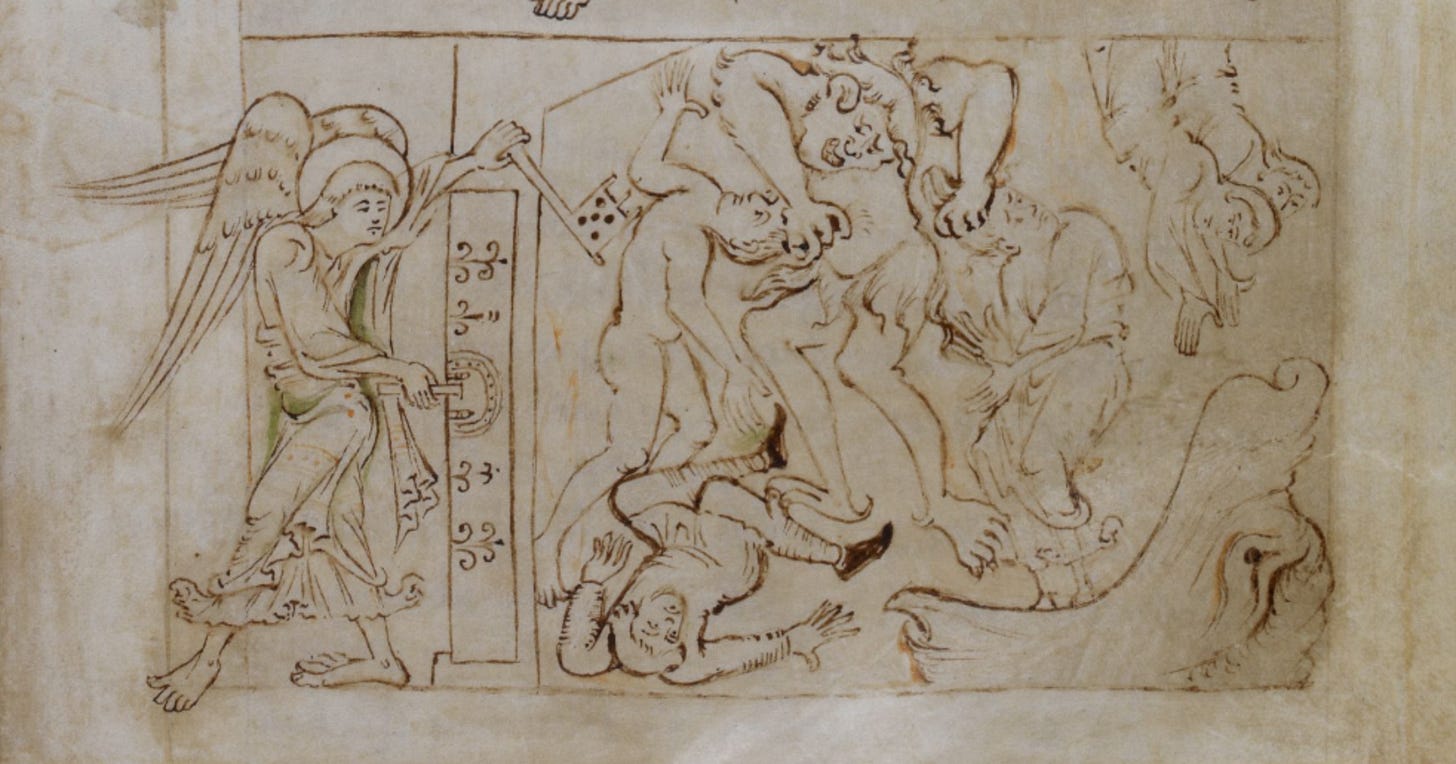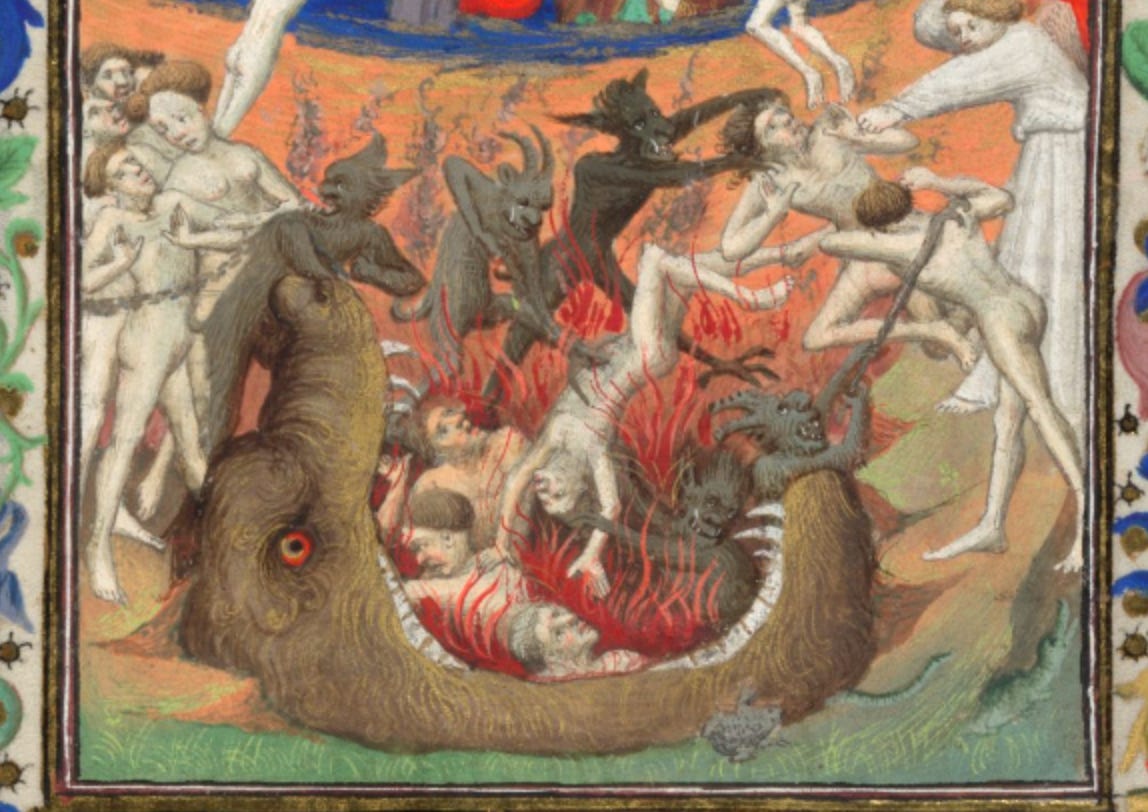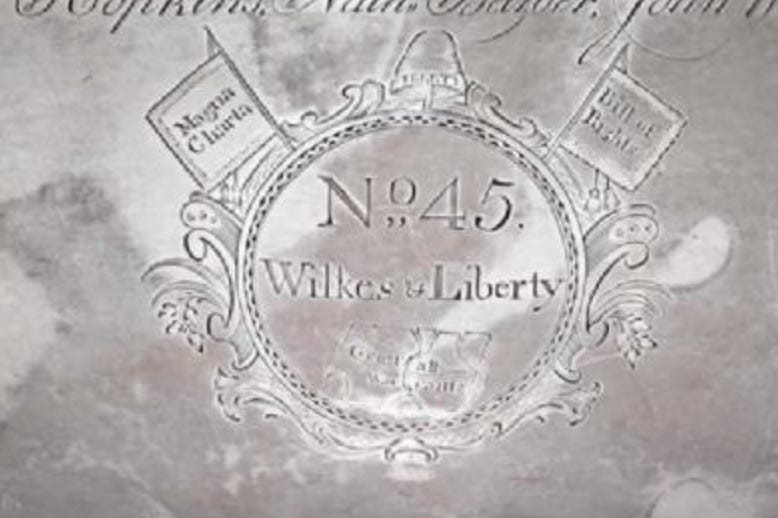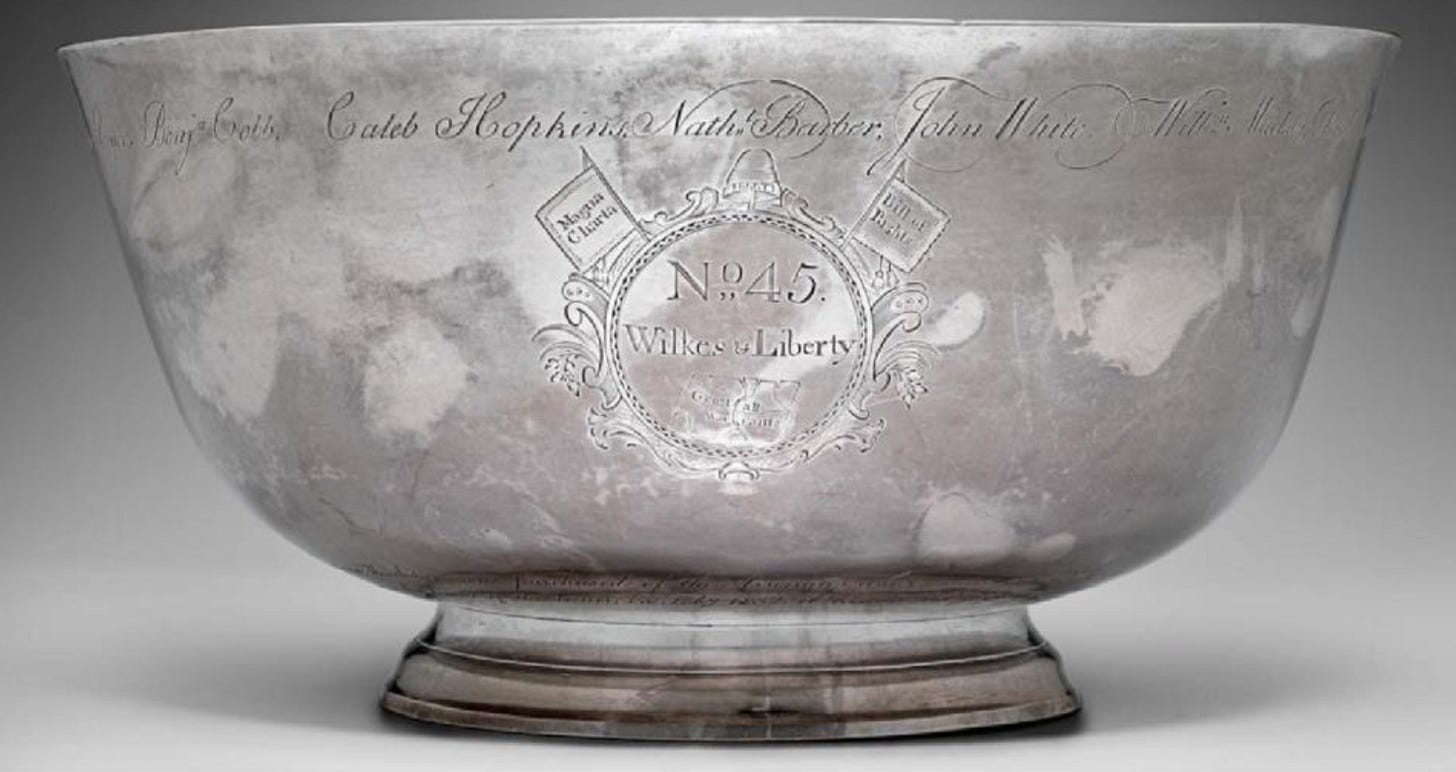The Massachusetts Medievalist on Paul Revere's Medievalism (1768)
After a September hiatus, the Massachusetts Medievalist has returned to muse about medieval studies, higher ed, and Massachusetts art and culture. Like many of us, I've been venturing out into the world some more as COVID restrictions are somewhat lifted; returning to art museums has been one of my pleasures in the last month: MassMOCA in North Adams, DeCordova in Lincoln, the Clark in Williamstown.
The Concord Museum and Worcester Art have extended their joint Paul Revere exhibit for a few weeks, since basically no one got to see it before the COVID lockdowns in March. When I visited, I was especially struck by this very medievalist image:

Take a moment to enjoy the devil on the left, who sports one claw foot and one fork foot (Paul Revere, “A Warm Place- Hell” American Antiquarian Society).
This 1768 engraving by Revere ridicules the "rescinders," the members of the colonial Massachusetts House of Representatives who backed down from their initial opposition to acts of Parliament imposing taxes on the colonies. To me it looked like all those wonderful Hell Mouths from medieval manuscripts - sinners driven into the mouth of a monster to be devoured in the eternal flames. The 11thc New Minster Liber Vitae provides a similar line drawing (British Library, Stowe MS 944, f.7r):

While the 15thc Bedford Hours is wonderfully explicit about the flames in the monster's mouth (British Library, Add.MS 18850, f.157r):

Alas, it seems that Revere was not drawing on first-hand knowledge of manuscript images like these. The American Antiquarian Society, which owns the engraving displayed in the exhibit, notes that Revere basically copied a similar political cartoon published in The Scots Scourge in 1765. His hilarious group of rescinders in tri-cornered hats and buckled shoes delightfully mixes politics and religion to form a very Protestant version of this originally Catholic archetype.
I suggest that Revere was probably aware of the medieval roots of his cartoon's image, however; he knew enough about medieval history to include a reference to the Magna Carta on the Sons of Liberty bowl, probably the most famous artifact associated with Revere (on display at Boston's Museum of Fine Arts). His time at the North Writing School in Boston, which ended when he was 13, didn't include study of English medieval history, but the Magna Carta was part of American Colonial political discourse from its beginnings, with adherents like William Penn and Benjamin Franklin (check out this British Library blog post for details). The flags engraved on the bowl explicitly connect "Magna Carta" and "Bill of Rights," reminding us that the Middle Ages are not as far away as we perhaps like to think they are.



